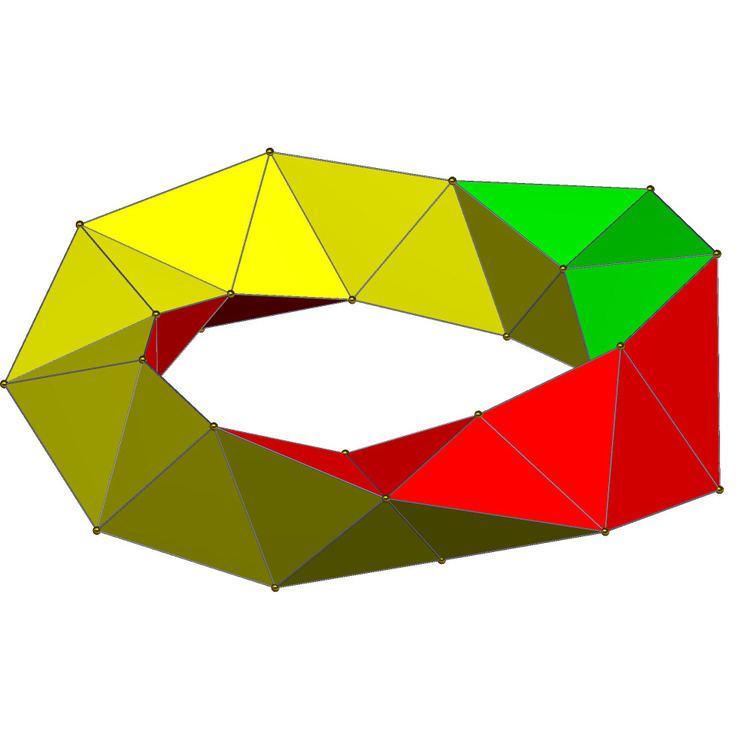 | ||
The Boerdijk–Coxeter helix, named after H. S. M. Coxeter and A. H. Boerdijk, is a linear stacking of regular tetrahedra, arranged so that the edges of the complex that belong to a single tetrahedron form three intertwined helices. There are two chiral forms, with either clockwise or counterclockwise windings. Contrary to any other stacking of Platonic solids, the Boerdijk–Coxeter helix is not rotationally repetitive. Even in an infinite string of stacked tetrahedra, no two tetrahedra will have the same orientation. This is because the helical pitch per cell is not a rational fraction of the circle.
Contents
Buckminster Fuller named it a tetrahelix and considered them with regular and irregular tetrahedral elements.
Architecture
See the Art Tower Mito.
Higher-dimensional geometry
The 600-cell partitions into 20 rings of 30 tetrahedra, each a Boerdijk–Coxeter helix. When superimposed onto the 3-sphere curvature it becomes periodic, with a period of ten vertices, encompassing all 30 cells. The collective of such helices in the 600-cell represent a discrete Hopf fibration. While in 3 dimensions the edges are helices, in the imposed 3-sphere topology they are geodesics and have no torsion. They spiral around each other naturally due to the Hopf fibration.
In addition, the 16-cell partitions into two 8-tetrahedron rings, four edges long, and the 5-cell partitions into a single degenerate 5-tetrahedron ring.
Related polyhedral helixes
Equilateral square pyramids can also be chained together as a helix, with two vertex configurations, 3.4.3.4 and 3.3.4.3.3.4. This helix exists as finite ring of 30 pyramids in a 4-dimensional polytope.
And equilateral pentagonal pyramids can be chained with 3 vertex configurations, 3.3.5, 3.5.3.5, and 3.3.3.5.3.3.5:
